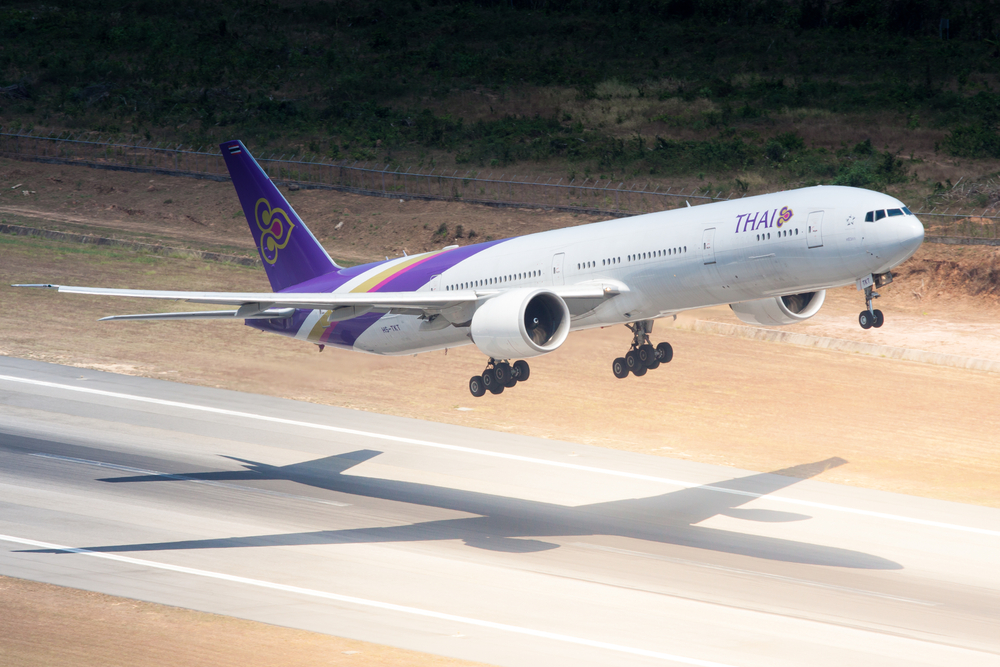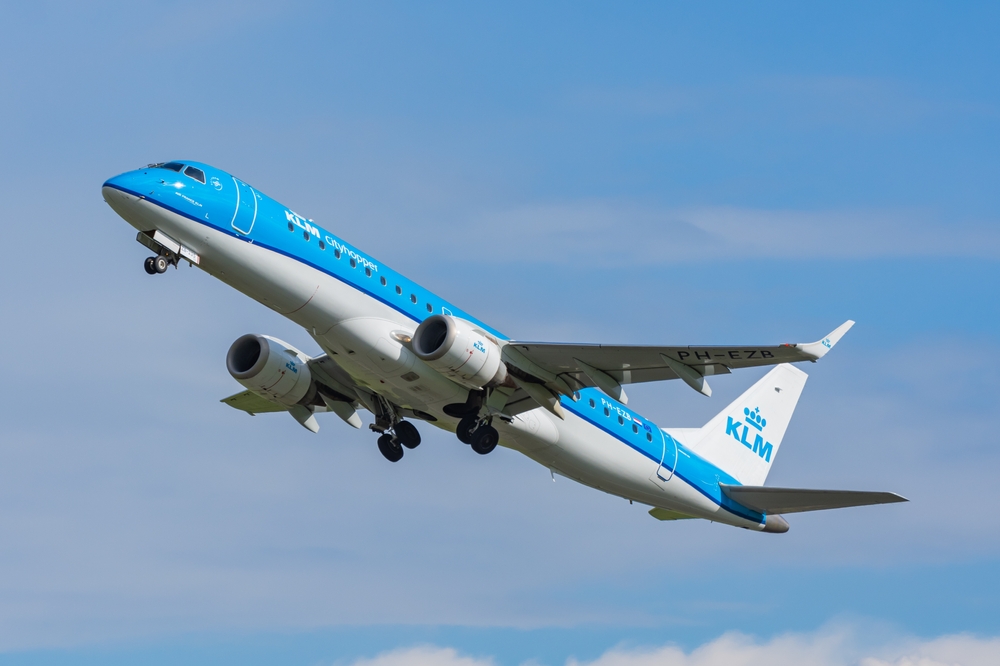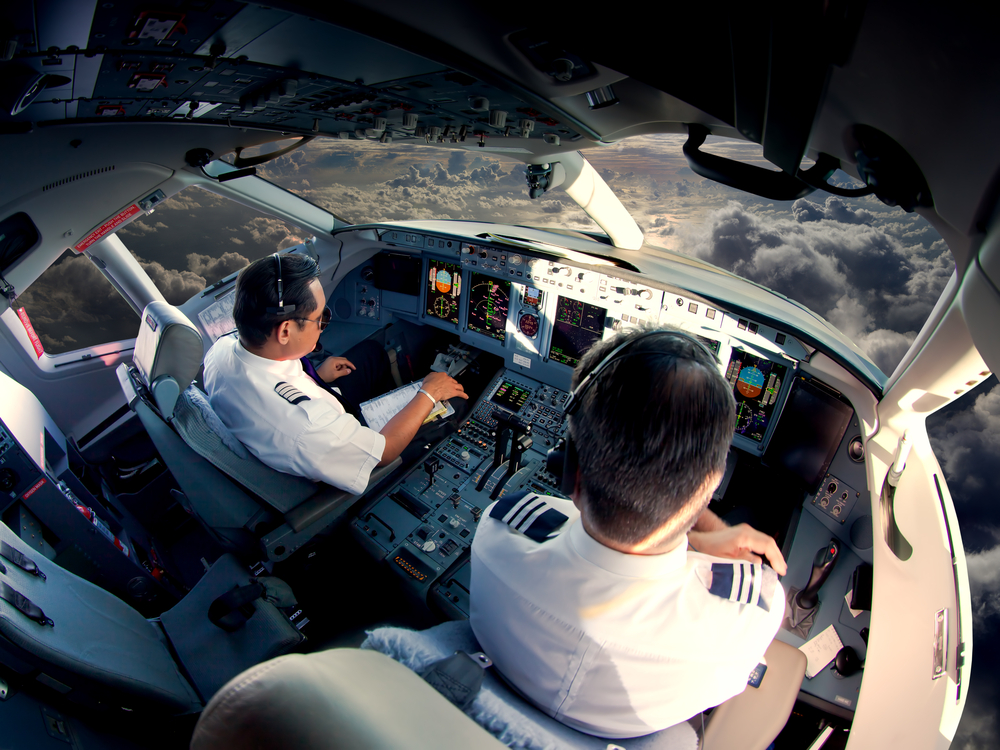Ready to level up your pilot career? Picking the perfect place to spread your wings can transform your work and life. With aviation soaring to new heights, some locations are becoming the ultimate pilot hotspots! Want to know where you can find the best job perks and lifestyle?
Let’s explore the five best locations worldwide where pilots can thrive in 2024.
Table of Contents
1. The Middle East
Why the Middle East?
The Middle East has become a prime job market for pilots, thanks to its booming airline business sector and luxurious lifestyle. The region hosts some of the world’s largest and most advanced airlines. These include Emirates, Qatar Airways, and Etihad Airways. These top-tier airlines are not only expanding their fleets but also setting new benchmarks in global air travel.
Pilots in the Middle East have the chance to operate the latest aircraft models and fly to numerous international destinations. The region’s strategic location provides exposure to a variety of weather conditions and complex air traffic environments.
Which aircraft types are most popular in the Middle East?
Emirates, which is one of the two flag carriers of the United Arab Emirates, is currently operating a mixed Airbus and Boeing fleet. The carrier’s fleet consists of 259 aircraft, including 116 Airbus A380-800s and 142 Boeing 777 wide-body jets. The airline also operates a single Airbus A319-100. In addition, 15 Boeing 787-9s and 15 Boeing 787-10s, ordered at Farnborough in 2019, are set to join the fleet starting in 2025.
In comparison, Etihad Airways, the UAE’s other flag carrier, operates a fleet of 98 aircraft and is always in need of skilled pilots. Most of its fleet consists of Boeing 777s and Boeing 787 Dreamliners for long-haul routes. For shorter flights, it relies on Airbus A321 family jets. of the fleet. As for fleet expansion plans, Etihad has additional Boeing 787-9s and 787-10s on order. Simultaneously, the airline is integrating more Airbus A350-1000 aircraft into its fleet.
In the meantime, Qatar Airways, the flag carrier of Qatar, has a fleet of 260 aircraft, including the Airbus A350, Airbus A380, Boeing 777, and Boeing 787. The airline is expanding with new Airbus A350s and Boeing 787 Dreamliners. It has also ordered the Boeing 777X, expected to join the fleet soon. Additionally, Qatar Airways is adding several Airbus A321neo aircraft to replace older narrow-body planes and boost capacity on regional and medium-haul routes.
How many pilots will the Middle East need in the future?
Boeing’s Pilot and Technician Outlook predicts the Middle East will need at least 62,000 new pilots by 2042! Why so many? It is all about rapid fleet expansions, skyrocketing air travel demand, and that sweet spot on the map connecting major global routes. So, if you are eyeing the Middle East, get your wings ready.
Key benefits for pilots in the Middle East
- Competitive salaries and benefits: Pilots in the Middle East often receive high salaries, tax-free income, and generous benefits. These include housing allowances and travel perks. The financial package makes it an attractive option for those looking to maximize their earnings.
- Modern infrastructure: The region’s airports, like Dubai International (DXB) and Hamad International (DOH), are equipped with cutting-edge facilities. This ensures a smooth working environment for pilots.
- Dynamic lifestyle: The Middle East offers a vibrant lifestyle with luxurious amenities, cultural experiences, and diverse travel opportunities. It is a place where professional growth and personal enjoyment go hand in hand!
Curious about pilot salaries? Check out them here.
Challenges
- Cultural adjustment: Adjusting to the cultural norms and lifestyle in the Middle East can be challenging for some pilots. The region has specific cultural and legal expectations that may differ significantly from those in Western countries.
- Work schedule: Pilots might face demanding schedules with frequent long-haul flights. While this can be exciting, it may also lead to a challenging work-life balance.
2. East Asia
Why East Asia?
East Asia is becoming a hot spot for aviation professionals. Countries like China, Japan, and South Korea are seeing aviation growth, making it an exciting time for pilots in the region. With leading airlines such as China’s Hainan Airlines and Japan’s All Nippon Airways, East Asia offers a range of opportunities for career growth.
Pilots working in East Asia benefit from flying a variety of routes across the Asia-Pacific region and beyond. The region’s dynamic airspace and advanced aviation infrastructure provide valuable experience in managing different flying conditions.
Which aircraft types are most popular in East Asia?
From bustling city routes to long-haul international travel, airlines in the East Asia region mostly rely on a mix of Boeing and Airbus aircraft, each chosen to meet specific operational demands. East Asia’s aviation scene features an impressive lineup of planes.
For instance, China’s Hainan Airlines leads with a fleet of 217 aircraft. Its narrow-body lineup includes 133 Boeing 737-800s, 17 Boeing 737 MAX 8s, and one Airbus A320neo. For long-haul flights, it operates eight Airbus A330-200s, 20 Airbus A330-300s, 10 Boeing 787-8 Dreamliners, and 28 Boeing 787-9 Dreamliners.
Over in Japan, All Nippon Airways (ANA) commands a fleet of 241 aircraft. Its narrow-body fleet comprises 37 Airbus A321s and 39 Boeing 737-800s. On the wide-body front, ANA boasts 23 Boeing 767s, 30 Boeing 777s, and a substantial 85 Boeing 787 Dreamliners. It also operates 24 De Havilland Canada DHC-8 Dash 8 turboprops for regional routes.
How many pilots will the East Asia region need in the future?
Boeing’s projections are in: China needs pilots — lots of them. The country will require at least 130,000 new pilots in the next two decades. That is a huge number! And it is not just China. Northeast Asia is right behind, needing about 25,000 more pilots. It is a golden opportunity for pilots ready to elevate their careers.
Key benefits for pilots in East Asia
- Robust aviation market: East Asia’s airlines are continually expanding, creating ample opportunities for pilots. The region’s rapid growth means there are plenty of openings and competitive packages available.
- Fleet diversity: Some airlines in East Asia still operate iconic aircraft like the Boeing 747, offering unique flying experiences. This is a rare opportunity for pilots who want to fly some classic models. Also, the region is full of job opportunities for turboprop pilots.
- Cultural richness: Working in East Asia means immersing yourself in diverse cultures and experiencing a blend of modern and traditional lifestyles. This cultural exposure can be both professionally enriching and personally fulfilling.
Challenges
- Licensing requirements: Pilots typically need a valid International Civil Aviation Organization (ICAO) license. Specific countries may have additional requirements or certifications. For instance, China often requires foreign pilots to hold a Type Rating and to pass local language proficiency tests.
- Language barriers: English is commonly used in aviation, but pilots might need to adapt to local languages and customs. This is particularly true in non-English speaking countries like Japan and South Korea.
3. Southeast Asia
Why Southeast Asia?
With airlines zipping across regional and international routes, Southeast Asia is another hotspot for pilots. Singapore Airlines leads the pack, known for its top-notch service and global reach. But it is not just about Singapore — Vietnam Airlines and Thai Airways are also flying high, fueling the region’s impressive growth.
As a pilot in Southeast Asia, get ready for an adventure. From diverse weather patterns to bustling air traffic, every day brings something new. Ready to dive into this dynamic flying scene?
Which aircraft types are most popular in Southeast Asia?
In Southeast Asia, several aircraft types dominate the skies, reflecting the region’s diverse needs. For example, Singapore Airlines, the flag carrier of Singapore, primarily operates the Airbus A350XWB and Boeing 777 for its long-haul routes, along with the Airbus A330 for medium-haul flights. The Boeing 787 Dreamliner is also a key part of its fleet, totaling 156 aircraft.
In the meantime, Vietnam Airlines, the flag carrier of Vietnam, has a fleet of 93 planes. It features the Airbus A321 for its narrow-body needs and the Boeing 787 Dreamliner as well as Airbus A350XWB for long-haul flights.
Thai Airways operates 77 aircraft. Similar to Vietnam Airlines, the flag carrier of Thailand flies the Airbus A350XWB, Boeing 777, and Airbus A330 to cover various route lengths, from regional to international.
In comparison, Garuda Indonesia, Indonesia’s flag carrier, has a mixed fleet of Boeing 737 family aircraft for short to medium-haul routes and Airbus A330 as well as Boeing 777 series for longer operations.

How many pilots will the Southeast Asia region need in the future?
By 2042, Southeast Asia will need up to 60,000 new pilots. This surge in demand opens amazing opportunities for both new and seasoned pilots. Picture being in a region where aviation is expanding rapidly. The career paths are diverse and dynamic. So, why not consider taking your pilot career to Southeast Asia?
Key benefits for pilots in Southeast Asia
- Top-tier employees: Singapore Airlines, along with other top carriers like Vietnam Airlines and Thai Airways, offers pilots excellent working conditions and extensive international routes.
- High-quality living: Cities like Singapore and Bangkok offer a high standard of living with great amenities, beautiful landscapes, and a rich cultural scene. Southeast Asia’s relatively low cost of living compared to other regions adds to its appeal.
- Dynamic work environment: Southeast Asian airlines are known for their commitment to both customer service and employee satisfaction. This balance creates a rewarding work environment for pilots.
Challenges
- Competition: The growing aviation sector attracts many qualified pilots, creating competitive job markets in major cities.
- Regulations: Each country in Southeast Asia has its own regulatory requirements. This may involve additional paperwork or certifications for international pilots.
4. India
Why India?
Driven by the country’s rapid economic expansion and massive population, India’s aviation market offers pilots a unique opportunity to be part of a fast-evolving sector. With a rapidly growing economy and huge population, pilots have many job opportunities here. The expanding network of domestic flights means lots of short-haul experience. Plus, more international flights are adding long-haul experience.
India’s diverse geography offers a thrilling mix of bustling cities and remote areas. Pilots can navigate all sorts of airspace, sharpening their skills and gaining valuable experience. Ready for a dynamic flying experience? India’s calling!
Which aircraft types are most popular in India?
In India, several aircraft types are particularly popular due to their suitability for the country’s diverse range of domestic and international routes.
- Airbus A320 family: The Airbus A320 series, especially the A320neo and A321neo, is the backbone of many Indian airlines. Air carriers like IndiGo, and Air India rely heavily on these models.
- Boeing 737 family: The Boeing 737, particularly the 737-800 and the 737 MAX, is another key player in India’s aviation sector. Low-cost carriers like SpiceJet use these aircraft for their domestic and regional operations.
- ATR 72: The ATR 72, a regional turboprop, is popular for connecting smaller cities and towns under India’s UDAN (Ude Desh Ka Aam Naagrik) scheme, which focuses on regional connectivity. Airlines like Alliance Air and IndiGo operate these aircraft on short, regional routes.
- Boeing 787 Dreamliner: For long-haul international routes, the Boeing 787 Dreamliner is favored by Indian carriers such as Air India and Vistara.
How many pilots will India need in the future?
According to industry predictions, India will need approximately 41,000 new pilots in the next twenty years to keep pace with the expansion of its airline business. This presents a unique opportunity for aspiring pilots, both within India and internationally, to explore a career in one of the world’s fastest-growing aviation markets.
Key benefits for pilots in India
- Expanding market: India’s aviation sector has seen significant growth in recent years, with a doubling of passenger numbers and a tripling of destination airports. This expansion creates numerous job opportunities for pilots.
- Government support: The Indian government’s UDAN-RDCS project aims to develop regional airports and increase domestic connectivity, which supports the overall growth of the aviation industry.
- Economic growth: India’s rising disposable income and increasing international business investments drive demand for air travel, enhancing job prospects for pilots.
Challenges
- Regulatory hurdles: Pilots from other countries may find the process of converting their license to an Indian DGCA license challenging and time-consuming.
- Complex airspace: India’s airspace is among the busiest and most complex in the world, requiring pilots to be highly skilled in managing heavy air traffic and diverse weather conditions.
- Living conditions: While cities like Delhi and Mumbai offer modern amenities, some regions may present challenges in terms of living conditions, particularly in terms of infrastructure and air quality.
5. Europe
Why Europe?
Europe remains a top choice for pilots! The continent offers opportunities ranging from low-cost carriers to major international airlines. This makes it an attractive destination for pilots seeking varied and rewarding careers. The diverse geography and climate also mean that pilots must be adept at handling various flying conditions, from winter storms in Scandinavia to summer heatwaves in Southern Europe.
The European aviation market offers a mix of short-haul and long-haul routes, allowing pilots to gain comprehensive experience.
Which aircraft types are most popular in Europe?
In Europe, the most popular aircraft types vary between short-haul and long-haul operations, reflecting the diverse needs of the region’s airlines.
Short-haul dominance:
- Airbus A320 family: The Airbus A320 family, particularly the A320 and A321 models, is widely used across Europe. It is a favorite for low-cost carriers like Ryanair, EasyJet, and Wizz Air due to its efficiency and range, making it ideal for short to medium-haul routes.
- Boeing 737 series: The Boeing 737-800, and increasingly the 737 MAX, are also popular choices, especially among budget airlines. Ryanair, one of Europe’s largest airlines, exclusively operates the Boeing 737-800.
Long-haul workhorses:
- Boeing 777: For long-haul routes, the Boeing 777 is a staple in many European fleets. Airlines like British Airways and Air France rely on this aircraft for transatlantic and other intercontinental flights.
- Boeing 787 Dreamliner: The Boeing 787 Dreamliner is gaining popularity due to its fuel efficiency and passenger comfort. It’s commonly used by carriers like LOT Polish Airlines for long-haul services.
- Airbus A350: The Airbus A350 is another popular choice for long-haul flights. It is known for its advanced technology and fuel efficiency, making it a preferred option for airlines like Lufthansa, Finnair, and Iberia.
Versatile wide-bodies:
- Airbus A330: The Airbus A330 is used by many European airlines for both long-haul and medium-haul flights. It is particularly favored by airlines such as KLM, Air France, and Virgin Atlantic.
- Boeing 747: Although being phased out, the Boeing 747 still remains in service with a few European carriers, most notably Lufthansa, who use it on high-demand long-haul routes.
Regional aircraft:
- Embraer E-Jets: For regional and domestic flights, Embraer E-Jets, particularly the E190 and E195 models, are popular. These jets are used by airlines like Lufthansa CityLine, KLM Cityhopper, and others.
How many pilots will Europe need in the future?
Europe’s aviation industry is on the brink of a major shift. By 2042, it is estimated that the continent will need around 155,000 new pilots. This demand stems not only from the growth of the industry but also from a wave of upcoming retirements.
So, what does this mean for aspiring pilots? The industry will need to hire and train a massive number of new professionals to keep up with the projected levels of demand. Are you ready to be part of this new wave of pilots? With opportunities expanding, now might be the perfect time to consider a career in Europe!

Key benefits for pilots in Europe
- Diverse pilot job opportunities: Europe’s aviation market includes low-cost carriers like Ryanair and major airlines such as Lufthansa and British Airways. This diversity provides pilots with various career paths and opportunities to build experience.
- Cultural and geographic diversity: Flying in Europe provides the unique opportunity to experience the continent’s rich cultural heritage and stunning landscapes. From the snow-capped Alps to the Mediterranean coastlines, pilots enjoy breathtaking views while navigating varied airspace.
- High standard of living: Europe is known for its high quality of life, with excellent healthcare, education, and public services. Countries like Germany, France, and the Netherlands offer pilots a comfortable and stable living environment, complemented by a strong social safety net. The work-life balance is often favorable.
- Career advancement and stability: With major hubs like London Heathrow, Paris Charles de Gaulle, and Frankfurt Airport, pilots have access to extensive networks that support professional growth. The presence of both low-cost and legacy carriers allows for a range of experiences, from quick domestic flights to complex international operations. This exposure is invaluable for pilots aiming to climb the career ladder or specialize in specific types of flying.
Challenges
- Strict regulatory environment: Pilots in Europe must navigate a complex regulatory landscape, with stringent requirements set by the European Union Aviation Safety Agency (EASA).
- Intense competition: The European aviation market is highly competitive, both for airlines and pilots.
- Cost of living: While Europe offers a high standard of living, the cost of living can be high, particularly in major cities like London, Paris, and Zurich. Housing, transportation, and everyday expenses can quickly add up, and pilots need to consider these factors when evaluating job offers in different European countries.
Selecting the best location to work as a pilot involves considering both career opportunities and lifestyle factors. Whether you are drawn to the luxurious environment of the Middle East, the dynamic growth of East Asia, the vibrant lifestyle of Southeast Asia, the burgeoning market in India, or the rich cultural tapestry of Europe, each region offers unique advantages! Each of these destinations offers a unique blend of professional satisfaction and personal enrichment, ensuring a rewarding career as pilot.

